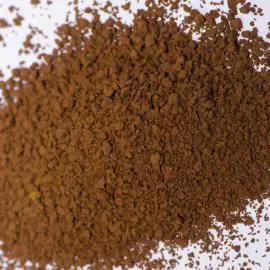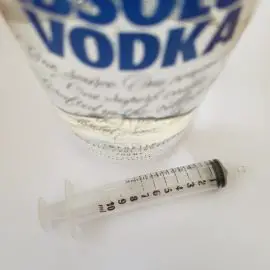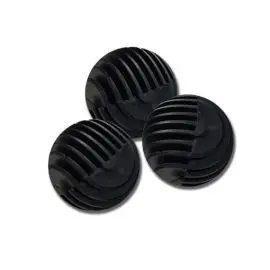How To Get Rid Of Digitate Hydroids In a Reef Tank
Digitate hydroids, also known as colonial hydroids, belong to a class of animals called Hydrozoa. A hydroid is part of their life stage. Hydrozoa are small predators related to jellyfish. In fact, sometimes the first appearance of hydroids in your aquarium may be in the form of miniature jellyfish. The majority of hydroids are colonial, meaning they gather in groups in your rockwork. The meaning of the word ‘digitate’ is defined as ‘spread like a hand’. As fascinating as all of this is, in this article we will look at methods to get rid of digitate hydroids in a saltwater aquarium.
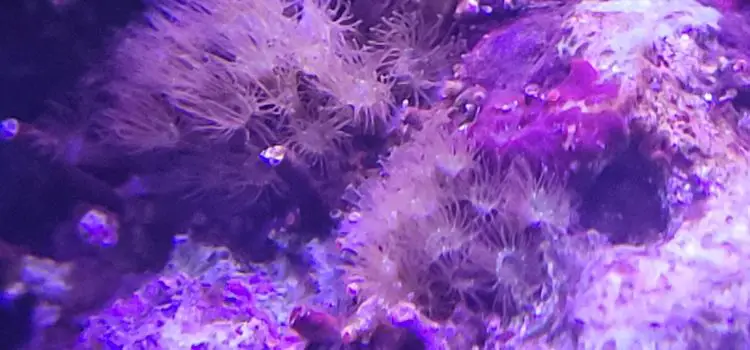
Why do hydroids appear in tanks?
Both the free-swimming mini jellyfish and the colonial polyp stage can be inadvertently introduced into your aquarium on live rock, coral frags, in live sand, and on macroalgae. In fact, they can accommodate a single drop of natural seawater.* When adding a fish to your tank, we may have added a hydroid or two too. They may even have been added with live food, or unbelievably, even with brine shrimp cysts. If you keep a saltwater aquarium, count yourself lucky if you have not had them appear in your system.
Are digitate hydroids good or bad in a reef tank?
Hydroids are reliant on your aquarium to provide them with the essentials they need to live and proliferate. There have been reports of reefers noticing digitate hydroids appear. Then they disappear a few weeks later. The opposite is true too and they may flourish. If they begin to colonise your live rock, then they have the potential to sting your coral and fish alike. It is important to understand that colonial hydroids are self-limiting. What this means is the colony limits its own growth through its actions. To speak plainly: if you ensure that the environment is unfavourable for further colonisation, they will stop colonising it.
What is the treatment to get rid of digitate hydroids?
To get rid of digitate hydroids there are a few option available to you. Unfortunately, not all of it works all of the time, but some of it does have an impact. There are some drastic measures you can take that will certainly kill them, but it depends on your system and the risks you are willing to take to get rid of them.
Manual removal of live rock to get rid of digitate hydroids
If this is an option, it is by far the easiest option. If you have a single colony occupying a live rock, remove the offending rock. You then have the choice of treating the rock and putting it back, or replacing it with another clean one (I know what I would do). If you do choose to clean the rock then follow these guidelines:
Bleach the rock and then follow that up with muriatic acid. The bleach will kill absolutely everything alive on the rock. The muriatic acid will burn off a thin layer of the rock removing phosphate that may be bound to it. Follow this rock cleaning method in detail here.
Just starting out in the hobby?
Get your copy of How To Set Up A Successful Saltwater Aquarium ebook today.
This ebook will help to guide you past the mistakes I have made over the years.
What will eat digitate hydroids?
Going down the biological control route is a good option. Some of the inverts and fish below do get rid of digitate hydroids, but each has their own traits and tastes. Adding to your aquarium unfortunately does not guarantee success. Some are also very difficult to get your hands on.
1. Peppermint Shrimp
This is a known predator of the phylum Cnidaria. These include both Aiptasia and hydroids. The Peppermint shrimp is well known for its ability to decimate both Aiptasia anemone and hydroids, both unwanted hitchhikers in saltwater aquariums. However, you will need one that has a taste for them. The advice is to get a few, tank permitting, and hope one of them works out. Peppermint shrimps do not come with risk. They are voracious predators, and can also attack zoathids, chalices and other corals that capture their food in upward facing positions. Peppermint shrimps are easy to catch if they do become troublesome.
2. Emerald Crab
Emerald crabs, also known as Mithrax crabs, are omnivores and scavengers of saltwater aquariums. They dine on algae, detritus, fish food and have been documented feeding on hydroids. Emerald crabs are a relatively peaceful addition to a community tank, but it depends on the individual crab if it wants to eat your hydroids or not. It may be worth adding several in the hopes you hit the jackpot. They have been known to take smaller fish and inverts, but this is uncommon.
3. Salmacis Bicolor Urchin
You have the option of an urchin known to get rid of digitate hydroids. Like all urchins, the Salmacis is slow moving, but stops very occasionally. However, similar to urchins employed for removal of algae, they cannot get into the crevices and the holes of your live rock.
4. Lynx Nudibranch
The Lynx Nudibranch specializes in eating hydroids. It will most definitely solve your problem, but they are extremely difficult to come by, if not impossible.
5. Sea Hare
A Dolabella Sea Hare is type of sea slug often added to a reef aquarium to eat problem algae, but they are known to get rid of digitate hydroid along the way too. The Sea Hare is a 50/50, and you may or may not get lucky. The biggest limitation however, is that they are large slugs with large appetites for algae. They can sometimes be hired from an LFS, because it is difficult to sustain their diet once they have done the job. This should only be an option if you also have an algae situation. Additionally, they have a toxic potential if they die in your tank, so much thought should go into risking this option.
6. Flameback Angelfish
This is another hit and miss option, with a risk of it nipping at your corals. It is especially fond of SPS and some polyp corals too.
6. Butterfly Fish
Butterfly fish have been reported to get rid of digitate hydroids every now and again, but they are few and far between. They are more likely to eat your corals.
What will kill hydroids?
Stepping out of biological control and into chemical eradication, we have the option of using Fenbendazole. This is not a bad option if you do not have a lot of inverts and corals. Reefers have diluted veterinary Fenbendazole to use in their reef tanks. The result is no more digitate hydroids. However, being a wormer, it also has the potential to kill all coral with a ‘digitate’ like structure. This includes Green Star Polylp, Xenia and some LPS. It will also kill all worm-like creatures such as Feather-dusters, Vermetid snails. Inverts should be completely removed too to limit the risk to them.
Cloverleaf have released a product called Wormer+. Although this product is marketed at freshwater fish and internal worms, it has the same active ingredient of the veterinary wormer, Fenbedazole.
Caution should be used if you intend to use this product, or any product containing invertebrates.
- Prevent nasty parasites from your Discus, Angel fish and other prized aquarium fish. It is harmless to most fresh water tropical fish.
- Flubendazole is the effective main active ingredient, and works differently to other Fluke treatments by gently starving the parasite; making this product perfectly safe for regular usage.
- Wormer Plus cleverly balances out its ingredients making very little (if any) difference to PH when using wormer plus.
Good tank husbandry to get rid of digitate hydroids
For many reefers, overfeeding of both coral and fish can contribute to the sudden influx of digitate hydroids. The food we are broadcast feeding to our fish and coral is the same food that our resident hydroids eat. As mentioned earlier in the article, hydroids are a self-limiting creature. If the food becomes less readily available, their colonies will diminish too. The same is relevant for bristle-worms. When you stop feeding, they stop being prolific breeders.
Limit your feeds. Ask yourself if you can cut down on what you add to your tank daily. Keep your water column as clean as possible, with better filtration. If you have not already, consider installing a roller mat. They are ideal for this situation. Add a UV sterilizer to kill any waterborne hydroids, thereby preventing further colonies occurring. I know this has worked for me.
Increasing alkalinity and calcium to get rid of digitate hydroids
Raising of alkalinity and calcium has been referenced on forums and groups, in the belief that it may become unfavourable for hydroids. When I experienced my problem, I could not find to what level they should be raised too. I knew that a reef tank could quite happily function on the higher levels of 11dKH and 450ppm Calcium, so that is what I aimed for. I cannot say with certainty if it helped, but my corals loved it, as did the coralline algae.
Conclusion
You will not get rid of digitate hydroids completely unless you shut the tank down completely too. The potential for them to be in your water, on a frag plug, on a snail shell, is endless. With an 150 gallon SPS dominant tank I opted for biological control. I could not risk using a wormer in my system. I cut down on feeding from 2 frozen mysis and/or krill cubes every morning and evening, to one in the morning and one in the evening. I stopped feeding my corals because they get plenty of light. I bought a Red Sea REEFmat and installed it in my sump, and changed the bulb in my UV sterilizer. I added 3 Peppermint shrimp and 2 of them have turned out to be hydroid killers. The Mithrax crabs I added, well, they are happy. I have seen a steady decline in hydroids. I know they will always be there. I just need to be one step ahead at all times.
At times it can feel never ending, but if you put the work in, you should see the result.
*https://www.amazon.com/Complete-Guide-Dwarf-Seahorses-Aquarium/dp/0793805341
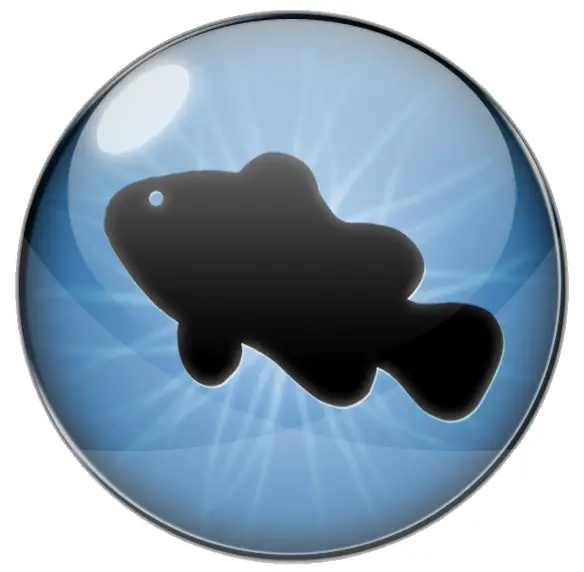
Hi, my name is Craig.
I am the owner of The Salty Side.
Firstly, thank you for visiting us. If you have found this article to be informative, and you now have a better understanding of the topic, then my job is done.
If you are feeling charitable, and feel I deserve a little thank you, I thank you in advance for any support given.



